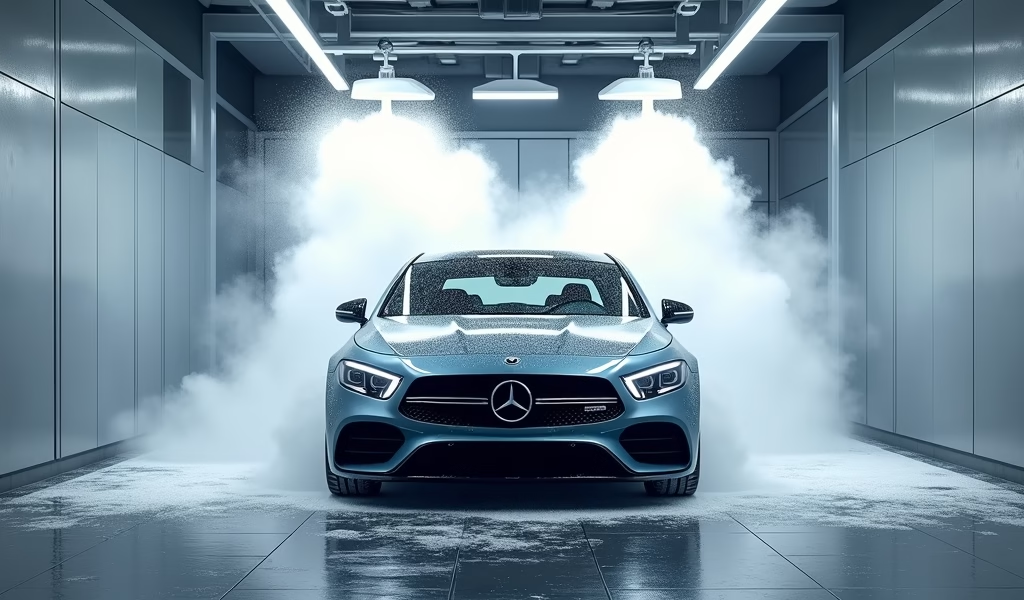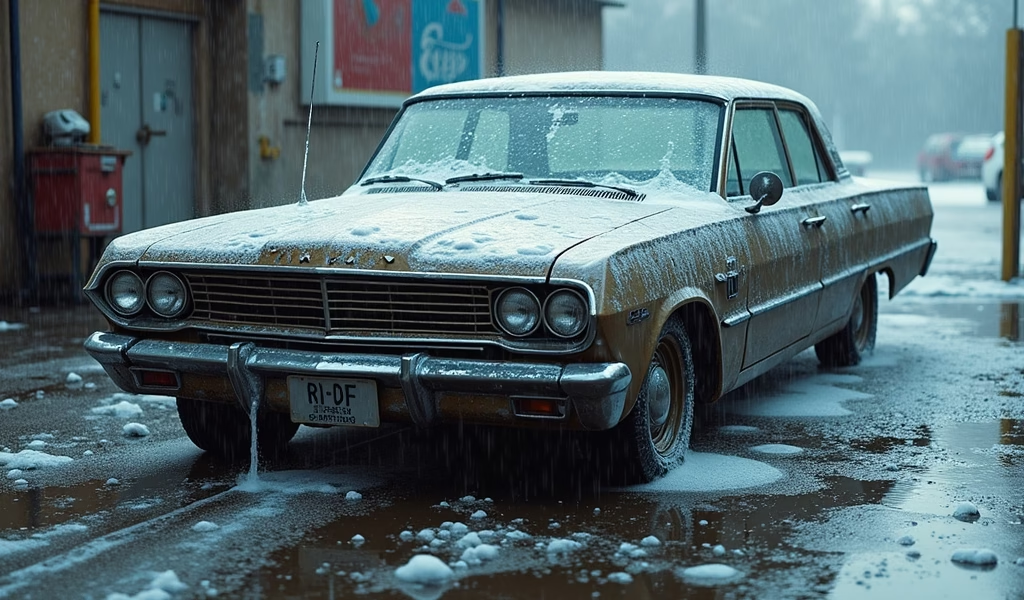Overview
Self-service car washing offers the perfect balance of cost-efficiency ($3-10 vs. $15-25 for automatic washes), quality results, and control over the cleaning process when using proper techniques like working from top to bottom, using the right settings, and finishing with thorough drying. Regular self-service washing every 1-2 weeks not only saves money but provides superior cleaning compared to automatic washes while creating a satisfying personal connection with your vehicle maintenance.
Table of Contents
- Why Choose Self-Service Car Washing?
- Preparation: Setting Yourself Up for Success
- Maximizing Your Time and Money in the Bay
- Proper Washing Techniques for Professional Results
- Choosing the Right Products and Settings
- Finishing Touches for That Professional Shine
- Conclusion: Is Self-Service Worth It?
- Frequently Asked Questions
Why Choose Self-Service Car Washing?
There’s something deeply satisfying about transforming your grimy vehicle into a gleaming masterpiece with your own two hands. As a mechanic who’s seen thousands of vehicles come through my bay doors, I can tell you that regular washing isn’t just about vanity—it’s preventative maintenance that protects your investment.
Self-service car washes offer the perfect middle ground between expensive detailing services and potentially damaging automatic washes. With prices typically ranging from $3-10 per wash compared to $15-25 for automatic washes or $100+ for professional detailing, the car wash savings add up quickly for regular users.
But the benefits go beyond your wallet. Self-service bays give you complete control over how your vehicle gets cleaned. You decide which areas need extra attention, which products to use, and how much pressure to apply. For those of us who genuinely care about our vehicles, that level of control is priceless.
The environmental benefits shouldn’t be overlooked either. According to the Environmental Protection Agency, commercial car wash facilities are designed to properly collect and dispose of wastewater, unlike driveway washing where chemicals and contaminants flow directly into storm drains.
Preparation: Setting Yourself Up for Success
The difference between a frustrating self-service experience and a satisfying one often comes down to preparation. Think of it like prepping for surgery—you want everything ready before you make the first incision.
Start by checking the weather forecast. Washing in direct sunlight causes soap to dry too quickly, creating spots and streaks. Ideal conditions are overcast days with moderate temperatures—not so cold that water freezes on contact, not so hot that it evaporates immediately.
Before heading out, gather these essentials:
- Quarters or payment cards (most bays take $5-10 to complete a thorough wash)
- 2-3 clean microfiber towels for drying
- A microfiber wash mitt (far gentler than the communal brushes)
- Wheel brush (wheels collect the most abrasive grime)
- Small bucket (helpful for rinsing your mitt)
- Interior quick detailer and cloth (might as well clean inside while you’re at it)
Take five minutes to remove trash, personal items, and electronics from your vehicle. Nothing’s worse than accidentally soaking something important during your washing frenzy. I also recommend wearing clothes and shoes you don’t mind getting wet—you’ll inevitably catch some splash-back.
Finally, mentally map your attack plan. Identify problem areas like bug splatter on the front bumper, tree sap on the hood, or excessive mud on wheel wells. These spots will require extra attention and possibly special techniques.

Maximizing Your Time and Money in the Bay
Self-service car washing is a race against the clock. Most bays give you 4-8 minutes of active wash time per standard payment, so efficiency is crucial. After 25 years working with vehicles, I’ve perfected a sequence that maximizes every second:
First, insert your payment and select the high-pressure rinse. Quickly blast the entire vehicle from top to bottom to remove loose surface dirt. This initial rinse is crucial—skipping it means you’ll be grinding dirt particles into your paint during the wash phase.
Next, switch to the soap setting. Apply generous amounts to the entire vehicle while it’s still wet. Let the soap dwell for 30-60 seconds if possible—this gives the detergents time to lift stubborn dirt without requiring aggressive scrubbing.
If using the bay’s brush, rinse it thoroughly before touching your paint. These communal tools often harbor grit from previous users. Better yet, use your own microfiber mitt which drastically reduces the risk of scratching.
Work methodically from the top down, focusing on one section at a time: roof, windows, hood, trunk, doors, and finally, the lower panels and bumpers. This prevents dirty runoff from contaminating already-cleaned areas.
Save the grimiest areas—wheels, tires, and undercarriage—for last. These parts contain the most abrasive contaminants like brake dust and road grime. Use the wheel-cleaning setting if available.
Pro tip: Some self-service bays allow you to pause the timer by placing the wand back in its holder. This feature gives you extra time for manual scrubbing without wasting paid spray time. Just be considerate during busy periods.
Proper Washing Techniques for Professional Results
The tools and products you use matter, but technique makes the difference between amateur results and professional-grade cleanliness. After cleaning thousands of vehicles, I’ve identified key practices that separate the pros from the novices.
Always maintain proper distance between the pressure wand and your vehicle—about 3-4 feet for most surfaces. Too close, and you risk damaging trim, emblems, or even paint. Too far, and you lose cleaning power. Adjust your distance for different areas; stay further back on soft trim and closer for stubborn grime on metal surfaces.
When scrubbing, use straight, overlapping lines rather than circular motions. Circular scrubbing creates swirl marks that become painfully visible in direct sunlight. Straight motions follow the airflow pattern of your vehicle and reduce the risk of micro-scratches.
Pay special attention to often-neglected areas:
- Door jambs and thresholds
- Area behind door handles
- Fuel door and surrounding crevice
- Around headlights, taillights, and emblems
- Between body panels and trim pieces
For wheels, I recommend using a dedicated brush. Wheels collect brake dust—essentially metal particles—that can scratch your paint if transferred to body panels. Use a brush with soft bristles that can reach between spokes without damaging wheel finishes.
When rinsing, use a sweeping motion and allow water to sheet off naturally. This touchless car wash technique helps remove soap completely without leaving residue that can cause water spots later.
One technique I’ve refined over years: after the main rinse, lightly mist the entire vehicle with the spot-free rinse setting, which uses filtered water. This creates a thin layer of mineral-free water that dries more cleanly than tap water.
Choosing the Right Products and Settings
Self-service bays typically offer 4-8 different settings through a selector dial. Understanding each function helps you get the most bang for your buck.
The pre-soak or high-pressure soap setting combines detergent with high-pressure water. It’s ideal for your initial cleaning pass and for loosening stuck-on debris like bugs or bird droppings. The foam density might seem less impressive than the brush soap, but its cleaning power is actually superior for the initial application.
The brush/soap setting dispenses thicker foam through the brush attachment. If using the provided brush, remember to rinse it thoroughly first. This setting works best for stubborn areas after your initial soap application. The foam here contains lubricating agents that help prevent scratching during manual scrubbing.
High-pressure rinse does exactly what it sounds like—it blasts soap and dirt away with clean water. This setting is your workhorse for most of the cleaning process. Use sweeping motions and work from top to bottom, allowing gravity to help carry away contaminants.
Wax/protectant settings apply a basic protective coating. While not as durable as hand-applied wax, they provide short-term protection and enhance shine. These products work best when applied to a completely clean, wet surface and then rinsed lightly with spot-free water.
The spot-free rinse uses deionized or filtered water that dries without leaving mineral deposits. Always end your wash with this setting, even if it costs extra. The reduction in water spots makes the investment worthwhile.
Many facilities also offer specialty settings like wheel cleaner, bug remover, or undercarriage wash. These targeted solutions are formulated for specific challenges and are worth the additional quarters when needed. According to Consumer Reports, regular undercarriage washing is particularly important in regions where road salt is used during winter months.

Finishing Touches for That Professional Shine
The difference between a good car wash and a showroom-quality finish happens in the final minutes after the washing is complete. This is where my detailing experience really pays dividends.
Once you’ve finished the final rinse, move your vehicle to a drying area if the facility has one. Immediate drying is crucial—water left to air-dry creates spots even after a spot-free rinse. Use clean, plush microfiber towels and work quickly but methodically.
For drying, I recommend the “pat and drag” technique: gently place the towel on the surface and pull it along in straight lines. This method removes water without potentially grinding microscopic particles into the paint. Replace or refold towels frequently as they become saturated.
Pay special attention to areas where water hides:
- Behind side mirrors
- Around headlights and taillights
- Between body panels
- Along weatherstripping
- Inside door handles and fuel door
For truly professional results, keep a spray bottle of quick detailer in your car. After drying, mist it lightly on one panel at a time and wipe with a clean microfiber cloth. This removes any water spots that formed during drying and adds a final layer of protection and shine.
Don’t forget your windows! Streak-free glass makes an enormous difference in the overall appearance. Use an automotive glass cleaner and newspaper (yes, newspaper—the ink acts as a mild abrasive) for crystal-clear results. Clean both exterior and interior glass surfaces.
Finally, consider applying a quick spray of protectant to your tires. This simple step gives them a clean, dark appearance that complements your freshly washed vehicle. Just avoid overspray on your brakes or on the tire tread itself.
Conclusion: Is Self-Service Worth It?
After decades in the automotive industry, I’m convinced that self-service car washing offers the best balance of quality, cost, and convenience for most vehicle owners. You simply can’t match the thoroughness and attention to detail that comes from washing your own vehicle, especially when equipped with the right knowledge and techniques.
The financial math makes a compelling case too. At roughly $5-10 per wash compared to $15-25 for automatic washes or $100+ for professional detailing, a twice-monthly self-service routine can save you hundreds of dollars annually while providing superior results.
Beyond the practical benefits, there’s something deeply satisfying about maintaining your own vehicle. That personal connection—knowing every curve and crevice, addressing problem areas yourself, taking pride in the results—creates a relationship with your car that automatic services simply can’t replicate.
Remember that consistent maintenance is always more effective than occasional deep cleaning. A quick self-service wash every two weeks prevents contaminants from bonding to your paint and reduces the need for more aggressive (and potentially damaging) cleaning methods.
So next time your car is looking a little dull, skip the automatic wash, gather your supplies, and head to a self-service bay. With the techniques you’ve learned here, I’m confident you’ll achieve results that would make any professional detailer proud—at a fraction of the cost.
Frequently Asked Questions
How much does a self-service car wash typically cost?
Self-service car washes typically cost between $3-10 per wash, depending on location and how long you spend washing. Most facilities accept quarters, tokens, or credit cards with various time increments available.
Is self-service car washing better than automatic washes?
Self-service washing is generally gentler on your paint and more thorough than automatic washes. You can target specific problem areas and avoid the stiff brushes of automatic washes that sometimes cause micro-scratches.
How often should I wash my car at a self-service bay?
For most drivers, washing every 1-2 weeks is ideal to prevent contaminant buildup. Increase frequency if you drive in harsh conditions like road salt, heavy pollen, or areas with frequent bird activity.
Can I bring my own soap to a self-service car wash?
Most facilities allow you to bring supplementary products like microfiber cloths and drying towels, but discourage outside soaps. The bay’s drainage systems are designed for their specific products, and outside chemicals may violate environmental regulations.
How long does a thorough self-service car wash take?
A complete wash including prep, washing, and drying typically takes 20-30 minutes. The actual washing phase in the bay usually takes 7-12 minutes of active spray time, with drying and finishing touches afterward.


Pingback: Car Wash Hose: 5 Essential Cleaning Tips - knowsyourcar.com
Pingback: Best Honolulu Car Wash: 7 Proven Tips - knowsyourcar.com